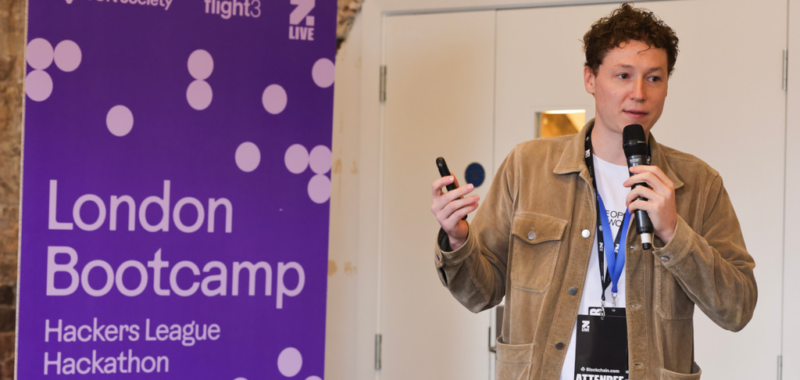Tap-to-earn took over crypto gaming this year, garnering hundreds of millions of players via Telegram mini apps. As a result, The Open Network (TON), the Telegram-aligned blockchain that most tap-to-earn games have launched their tokens on, has skyrocketed in popularity.
But the co-founder of TON Society, a foundation that supports the blockchain’s ecosystems with grants, thinks that tap-to-earn should be seen less as merely a gaming mechanic—and more as an effective way to introduce products to users.
“What we’re going to see next is projects using the viral mechanic, tap-to-earn, as more of a launch strategy,” TON Society co-founder Jack Booth told Decrypt at London’s recent Zebu Live conference. “I never believed that it’s going to be a whole sector of crypto. It’s always a go-to-market strategy.”
Tap-to-earn games typically spend months in a “mining phase,” where in-game progression counts towards a slice of a future airdrop. This period is typically built around simple gameplay, but many of these games also incentivize players to interact with social media posts and videos, invite in other players, and try out partnered games and projects.
This “viral mechanic,” as Booth puts it, has resulted in tap-to-earn projects attracting users in the hundreds of millions. Hamster Kombat, for example, boasted over 300 million players months before its airdrop. And Notcoin, the game that started the whole craze, had the most successful crypto gaming token launch of the year, hitting a peak market cap just shy of $3 billion.
“It’s what you do to build a massive community really, really fast, and distribute your tokens to as many users as possible,” Booth explained on the Zebu Live show floor, as a fleet of paper airplanes flew past, thrown from the TON Society conference booth. “But it’s always been about: What do you do after that?”
Some tap-to-earn games have relaunched into a new mining phase using a similar gameplay loop, albeit with a smaller amount of tokens up for grabs. Meanwhile, others like Notcoin have been more creative, pivoting towards becoming hubs for launching other games and projects.
For some gamers, the concept of a new and less lucrative mining phase bores them, especially after receiving a middling airdrop, and other times projects just aren’t clear enough about what’s next. As a result, many tap-to-earn tokens plummet in price following the airdrop. Those have been growing pains in the rapid rise of Telegram crypto games and apps.
“This is where we’re going to have the innovation in TON. The projects are going to be way clearer about the roadmap after token launch,” Booth told Decrypt. “When we haven’t had clarity, we’ve seen what happens: The tokens get punished during the airdrop.”
Booth points to Blum as a prime example of this approach in action. Currently, the project has a Telegram mini app that uses many of the viral mechanics from other tap-to-earn games as the creators work to launch a decentralized exchange (DEX).
This tap-to-earn strategy has led to Blum having a Telegram channel with over 31 million subscribers, a YouTube channel with nearly 8.3 million subscribers, and a Twitter with 5.5 million followers. To put this into perspective, centralized exchange Binance has less than 200,000 Telegram subscribers and just over 1 million YouTube subscribers, while Coinbase has 6 million Twitter followers—the figures for decentralized exchanges are significantly lower.
“Now when they launch a product, day one, they’re going to be the biggest DEX on the planet,” Booth suggested
In his eyes, this is the future of tap-to-earn. Companies will utilize the viral mechanic to gather a large community prior to launching, via a user acquisition model that’s less costly than traditional methods. Tap-to-earn is a way to grab users and build momentum before launching a more robust product.
Booth said he met people during Zebu’s TON Hackers League that were building Telegram-based projects, and will be implementing tap-to-earn during their respective launch phases. This included an AI trading bot and a gig marketplace like Fiverr.
“These guys are implementing tap-to-earn mechanics in their launch phase, because that’s what’s going to get them users,” Booth explained. “That’s the next step. Now we have a viral mechanic to use in every app that comes to TON. So every app has a million users to start with, and then it’s up to the app to actually do the conversion on-chain.”
Edited by Andrew Hayward

